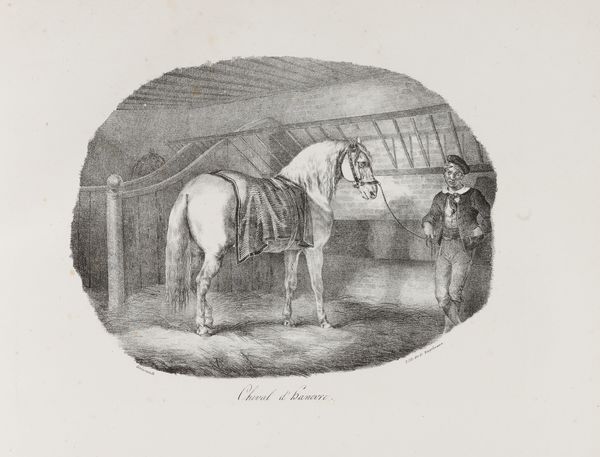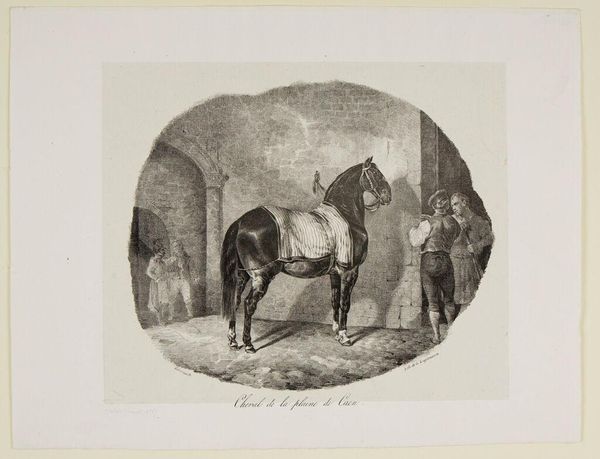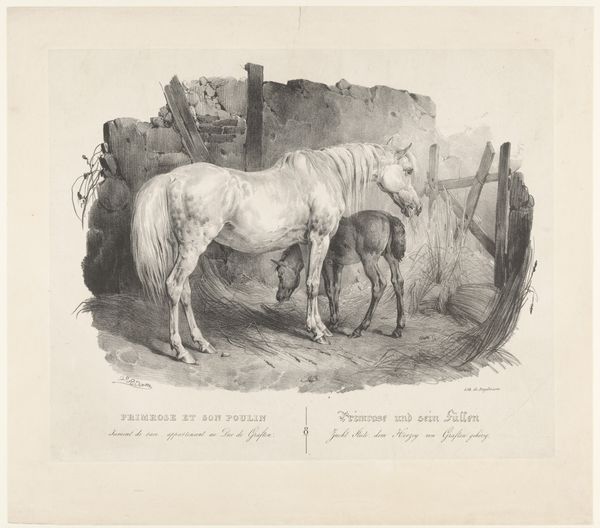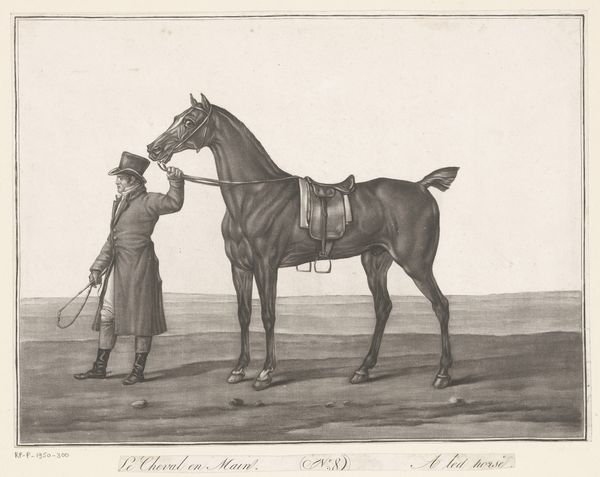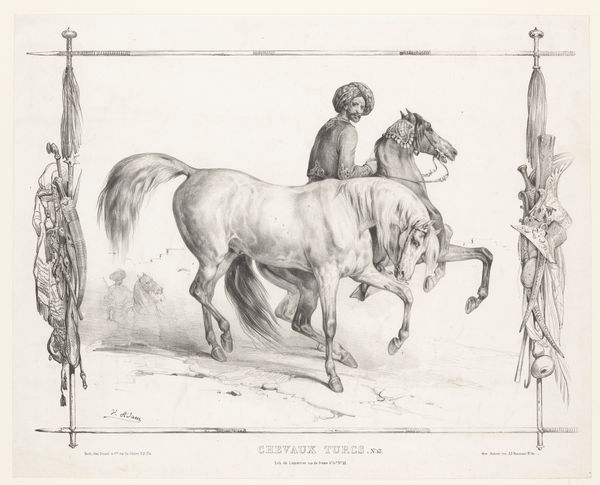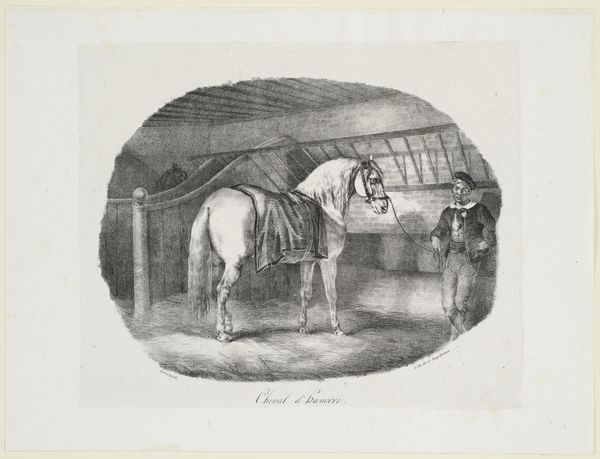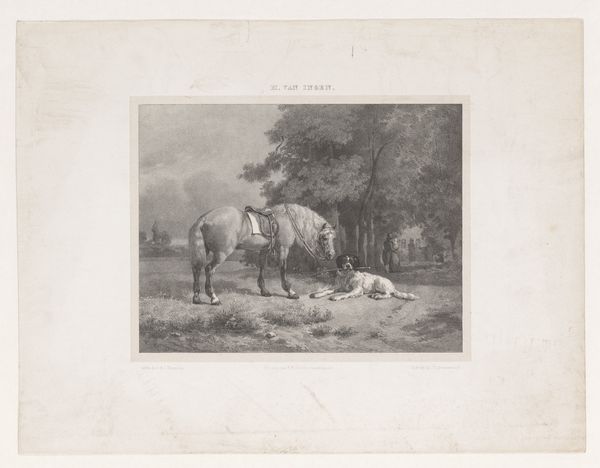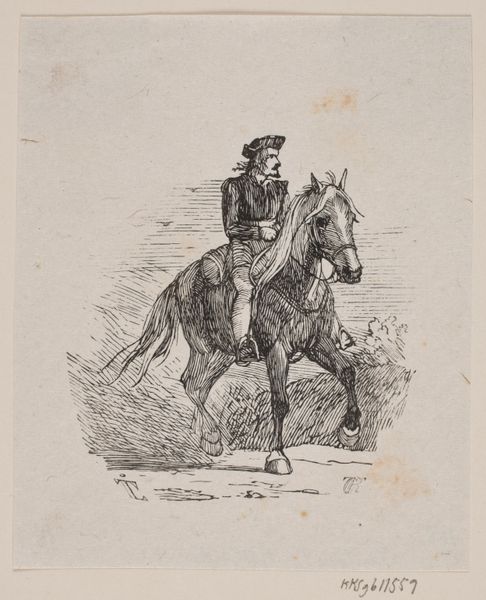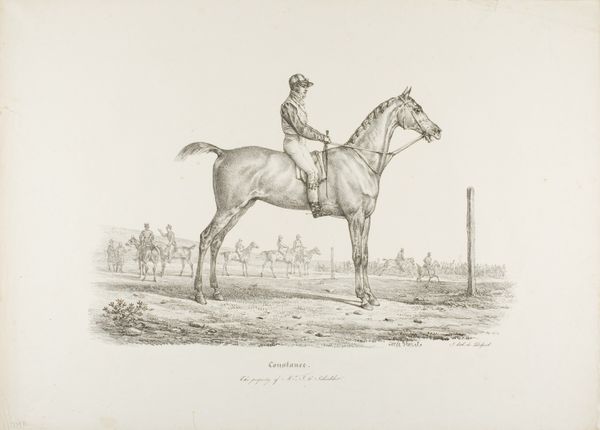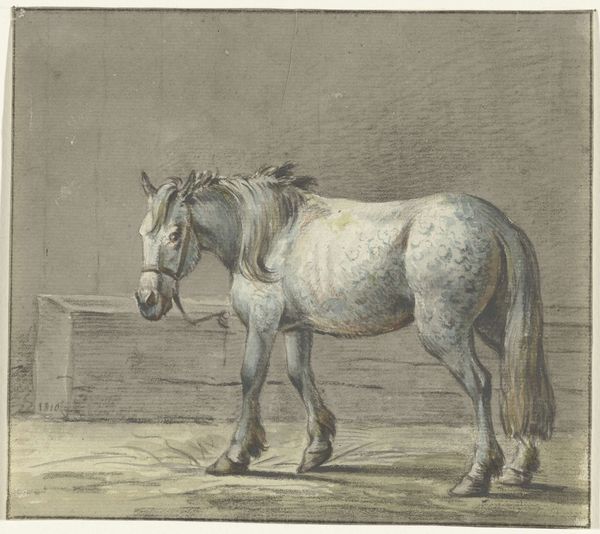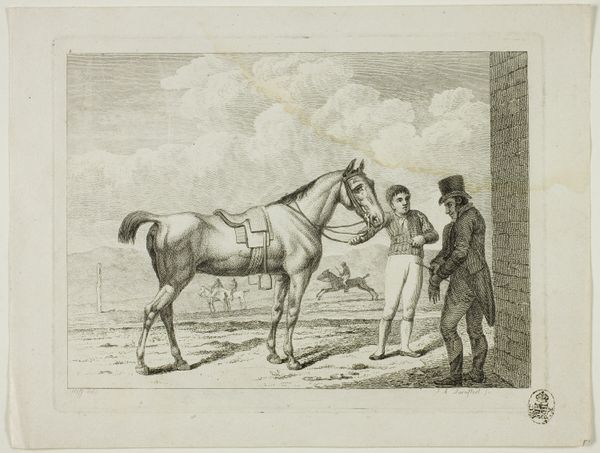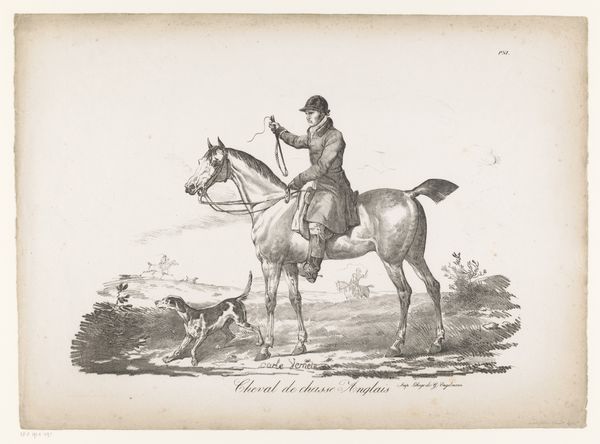
drawing, lithograph, print
#
drawing
#
animal
#
lithograph
# print
#
landscape
#
romanticism
#
france
#
genre-painting
#
realism
Dimensions: 7 3/4 x 9 in. (19.69 x 22.86 cm) (image)
Copyright: Public Domain
Curator: This is Théodore Géricault’s "Cheval de la Plaine de Caen," a lithograph from 1822, now at the Minneapolis Institute of Art. It's quite captivating. The contrast feels stark, almost theatrical, and the circular composition immediately draws the eye. What are your initial thoughts? Editor: I am struck by how the artist managed to give such depth to the drawing using only shades of black and white. How would you interpret this print from a formalist perspective? Curator: Well, first, consider the interplay of light and shadow. Géricault employs chiaroscuro masterfully, delineating form and creating a palpable sense of volume, particularly in the musculature of the horse. Notice how the circular format frames the subject, focusing our attention on the relationship between the horse, the human figures, and the architectural setting. Are you observing a distinct organization to the composition? Editor: Yes, the stark geometric composition of the interior of the structure forms a bold backdrop to the almost elegant curvilinear lines of the horse. It's a beautiful tension. Curator: Precisely! The architecture provides a rigid structure against which the organic form of the horse is highlighted. Think about how the texture – the rough stone wall versus the smooth coat of the horse – enhances the overall visual experience. We also see how Géricault manipulated the tonal range of lithography to mimic painterly effects, using nuanced gradients and strategic contrasts. Are there any philosophical notions you see in this technique? Editor: It is interesting how such a seemingly simple, monochrome print yields so much upon closer analysis. Thanks for helping me decode this Géricault print! Curator: My pleasure. I hope our analysis inspires new observations!
Comments
No comments
Be the first to comment and join the conversation on the ultimate creative platform.
